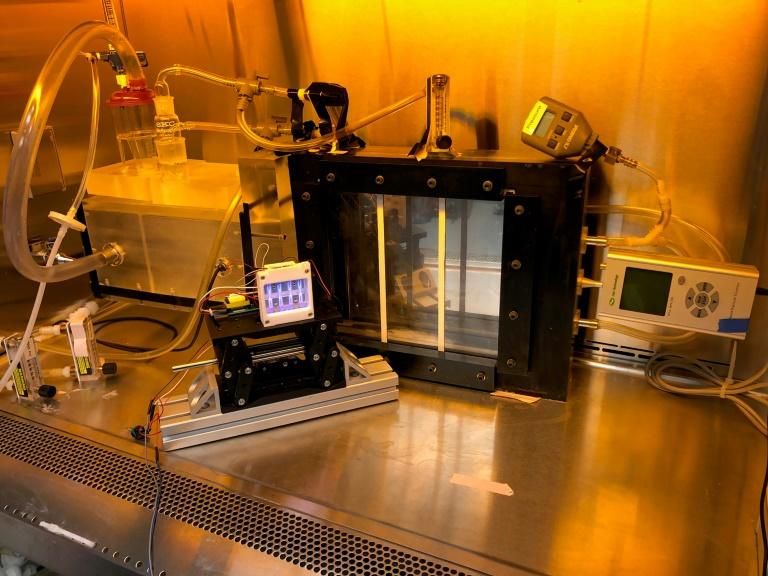Could a new type of ultraviolet lamp be used in stations, airplanes and schools to kill dangerous viruses, becoming a gamechanger in the COVID-19 fight?
Researchers at Columbia University have been working on such uses for years, and the current pandemic could confirm the value of their efforts.
UVC lamps have long been used to kill bacteria, viruses and molds, notably in hospitals and in the food-processing industry. As the coronavirus pandemic knocks world economies on their heels, this technology is experiencing a boom.
But UVC (for Ultraviolet-C) rays are dangerous, causing skin cancer and eye problems, and can be used only when no one is present.
The New York subway system, following the example of Chinese subways, plans to use ultraviolet lamps to disinfect its trains, but only during nighttime closures.
A team at Columbia’s Center for Radiological Research is experimenting with so-called far-UVC, rays whose wavelength of 222 nanometers makes them safe for humans but still lethal to viruses, the center’s director, David Brenner, told AFP.
At those frequencies, he explained, the rays cannot penetrate the surface of the skin nor of the eye.
That means they could be used in closed and crowded spaces where contamination risks run high, with potentially huge promise for use during the current pandemic.
In late April, President Donald Trump offered confusing remarks about somehow projecting ultraviolet rays into people’s bodies to kill the coronavirus.
He appeared to be inspired by federal research on the effects of natural light on the virus — but natural light has no UVC rays.
In 2013, the Columbia team began studying the effectiveness of far-UVC against drug-resistant bacteria. It next examined the rays’ use against viruses, including the flu virus. Only recently did it turn its attention to the coronavirus.
“We were thinking, how can we apply what we are doing to the current situation,” Brenner said.
But to test the impact of UVC on the extremely contagious coronavirus, the team had to move its equipment into a highly bio-secure laboratory at Columbia.
Experiments carried out starting “three-four weeks ago,” Brenner said, have already made clear that U

